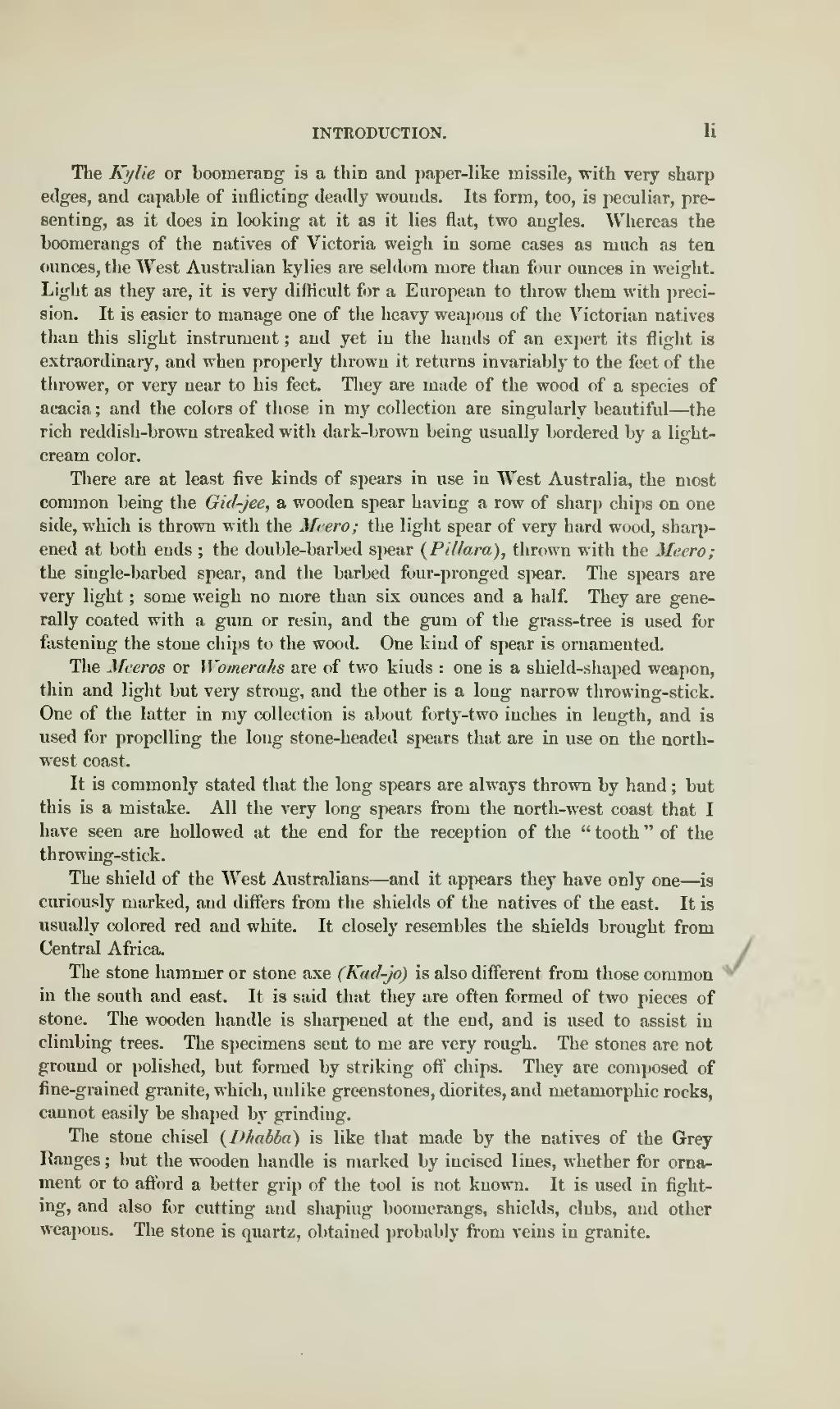The Kylie or boomerang is a thin and paper-like missile, with very sharp edges, and capable of inflicting deadly wounds. Its form, too, is peculiar, presenting, as it does in looking at it as it lies flat, two angles. Whereas the boomerangs of the natives of Victoria weigh in some cases as much as ten ounces, the West Australian kylies are seldom more than four ounces in weight. Light as they are, it is very difficult for a European to throw them with precision. It is easier to manage one of the heavy weapons of the Victorian natives than this slight instrument; and yet in the hands of an expert its flight is extraordinary, and when properly thrown it returns invariably to the feet of the thrower, or very near to his feet. They are made of the wood of a species of acacia; and the colors of those in my collection are singularly beautiful—the rich reddish-brown streaked with dark-brown being usually bordered by a light-cream color.
There are at least five kinds of spears in use in West Australia, the most common being the Gid-jee, a wooden spear having a row of sharp chips on one side, which is thrown with the Meero; the light spear of very hard wood, sharpened at both ends; the double-barbed spear (Pillara), thrown with the Meero; the single-barbed spear, and the barbed four-pronged spear. The spears are very light; some weigh no more than six ounces and a half. They are generally coated with a gum or resin, and the gum of the grass-tree is used for fastening the stone chips to the wood. One kind of spear is ornamented.
The Meeros or Womerahs are of two kinds: one is a shield-shaped weapon, thin and light but very strong, and the other is a long narrow throwing-stick. One of the latter in my collection is about forty-two inches in length, and is used for propelling the long stone-headed spears that are in use on the north-west coast.
It is commonly stated that the long spears are always thrown by hand; but this is a mistake. All the very long spears from the north-west coast that I have seen are hollowed at the end for the reception of the "tooth" of the throwing-stick.
The shield of the West Australians—and it appears they have only one—is curiously marked, and differs from the shields of the natives of the east. It is usually colored red and white. It closely resembles the shields brought from Central Africa.
The stone hammer or stone axe (Kad-jo) is also different from those common in the south and east. It is said that they are often formed of two pieces of stone. The wooden handle is sharpened at the end, and is used to assist in climbing trees. The specimens sent to me are very rough. The stones are not ground or polished, but formed by striking off chips. They are composed of fine-grained granite, which, unlike greenstones, diorites, and metamorphic rocks, cannot easily be shaped by grinding.
The stone chisel (Dhabba) is like that made by the natives of the Grey Ranges; but the wooden handle is marked by incised lines, whether for ornament or to afford a better grip of the tool is not known. It is used in fighting, and also for cutting and shaping boomerangs, shields, clubs, and other weapons. The stone is quartz, obtained probably from veins in granite.
